Aluminum
Aluminum is a chemical element with the symbol Al and atomic number 13. It is a silvery-white, soft, nonmagnetic, ductile metal in the boron group. By mass, aluminum makes up about 8% of the Earth's crust, making it the third most abundant element after oxygen and silicon.
Physical Properties:
- Melting Point: 660.32°C
- Boiling Point: 2519°C
- Density: 2.70 g/cm³
- Conductivity: Aluminum is a good conductor of heat and electricity.
Chemical Properties:
- Aluminum is highly reactive and can form a thin layer of oxide that protects it from corrosion.
- It reacts with both acids and bases.
- Aluminum does not easily corrode in water, as it forms a thin layer of aluminum oxide that protects the metal from further oxidation.
Uses of Aluminum:
Aluminum is widely used in various applications due to its advantageous properties, such as:
- Construction: Aluminum is used in the construction of buildings, infrastructure, and transportation vehicles due to its lightweight and corrosion-resistant properties.
- Packaging: Aluminum foil and containers are commonly used for packaging food and beverages due to their ability to protect the contents from light, oxygen, and moisture.
- Electrical transmission lines: Aluminum is used in overhead power lines due to its high conductivity and low cost.
- Aircraft and aerospace applications: The lightweight and strength of aluminum make it an ideal material for aircraft and aerospace components.
Study Guide:
Here are some study questions to help you understand the topic "aluminum":
- What is the symbol and atomic number of aluminum?
- What are the physical properties of aluminum?
- Describe the chemical properties of aluminum.
- What are some common uses of aluminum?
- Explain why aluminum is widely used in the aerospace industry.
By studying these questions, you can gain a comprehensive understanding of the properties and uses of aluminum.
.◂Science Worksheets and Study Guides First Grade. Magnets
Study Guide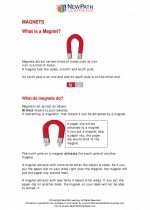 Magnets
Magnets  Worksheet/Answer key
Worksheet/Answer key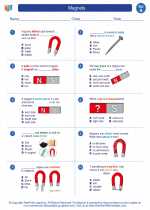 Magnets
Magnets  Worksheet/Answer key
Worksheet/Answer key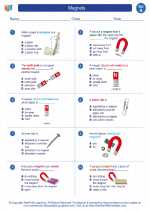 Magnets
Magnets  Worksheet/Answer key
Worksheet/Answer key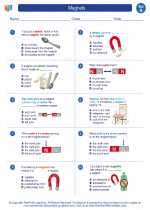 Magnets
Magnets  Vocabulary/Answer key
Vocabulary/Answer key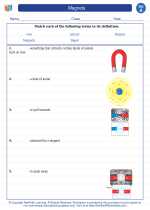 Magnets
Magnets 

 Worksheet/Answer key
Worksheet/Answer key
 Worksheet/Answer key
Worksheet/Answer key
 Worksheet/Answer key
Worksheet/Answer key
 Vocabulary/Answer key
Vocabulary/Answer key

The resources above cover the following skills:
PHYSICAL SCIENCE (NGSS)
Waves and their Applications in Technologies for Information Transfer
Students who demonstrate understanding can:
Plan and conduct investigations to provide evidence that vibrating materials can make sound and that sound can make materials vibrate.
Use tools and materials to design and build a device that uses light or sound to solve the problem of communicating over a distance.